Let’s start with a few use cases where the tech turned out to be helpful:
For brainstorming ideas

A bit vague – and not entirely true. Let’s have another go, with more detailed input this time.

The result?
Concrete input is key. Then ChatGPT provides a solid foundation for a human copywriter to build on. Important texts definitely need to be polished by a human to remove the generic passages and factual errors you can see in the first example.
For keyword research
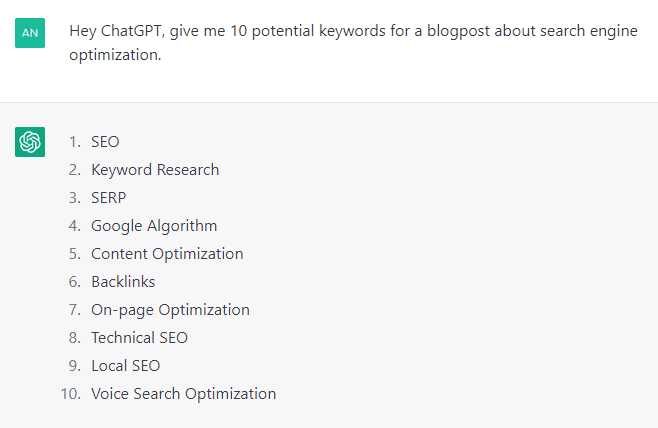
The result?
As a quick fix, really helpful. However, these results don’t measure up to those of dedicated tools such as Google Keyword Planner. ChatGPT does not analyze worldwide search queries, but simply delivers results based on its (less than transparent) training data.
For writing product descriptions

The result?
Quick, simple, generic. This makes it particularly suitable for repetitive content, such as coming up with a description of a sneaker for the 200th time.
As a quick translation solution
Sometimes you don’t need a perfectly polished translation; you just need to understand something quickly. For example, an email from a Swedish colleague:
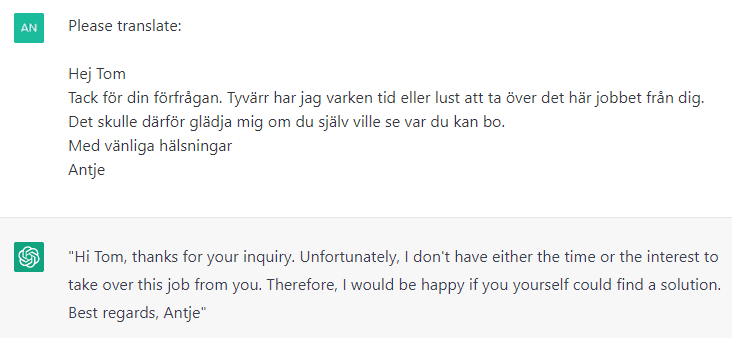
The result?
Satisfactory and helpful. ChatGPT speaks more than 95 languages. And it’s even more reliable than other machine translation tools, as a quick comparison with the same text on Google Translate and DeepL shows:
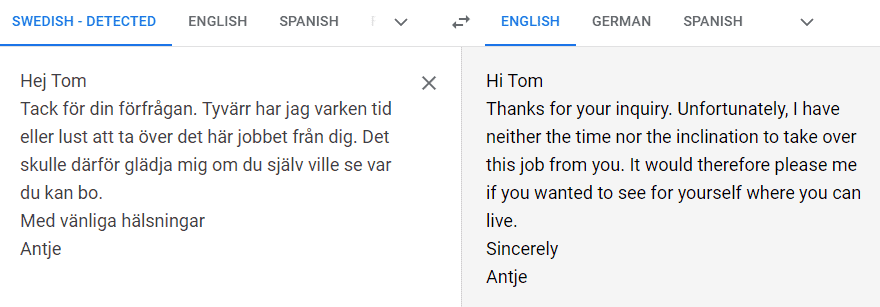

For (witty) variations on a theme
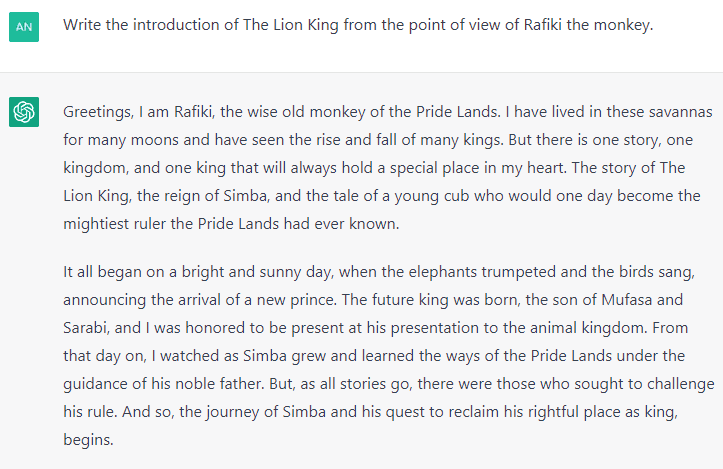
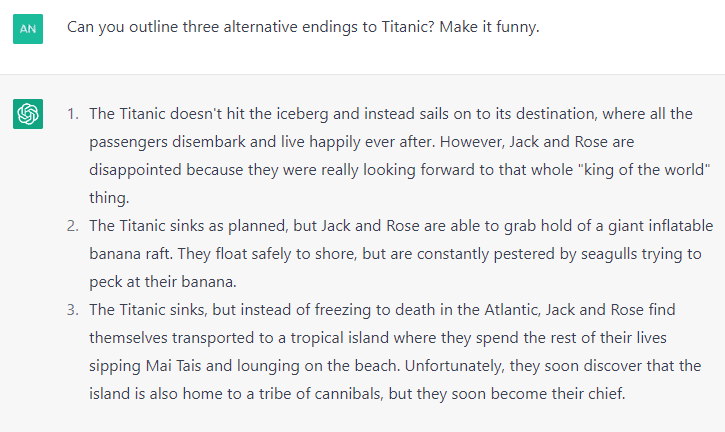
The result?
The tool can offer different options for a text, even without extensive instructions. This feature can be helpful when writing a draft: for example, if you need to come up with synonyms or alternative titles.
But while ChatGPT may speak many languages, multiple tests showed that the humor is sometimes rather random and only works in English.
Let’s now take a look at some use cases where ChatGPT is less suitable:
For slogan translation


(which literally means nothing in German)
The result?
Totally unemotional. And also incorrect. ChatGPT isn’t made for creative taglines (or anything else with puns).
For writing brand-specific content

The result?
While this may look good at first glance, it quickly becomes clear that the specs are wrong. And the tone doesn’t fit with Apple’s celebrated brand language, either. ChatGPT lacks background information on the company’s history, house style and values – in other words, everything that gives a brand its character. Hardly the best way to communicate your vision and goals. The same is true of your own personal branding, such as cover letters: if you leave it up to ChatGPT, you’ll get an adequately written but completely generic text.
As a source of factual information

The result?
The response to this slightly mean trick question demonstrates that while the bot’s answers may sound plausible, they are often incorrect or completely meaningless. Results are obtained from patterns in the training data, and the specific sources of this data are not visible to users. It’s therefore better not to trust facts and figures in GPT results unless you know the answer yourself or can easily verify it. And using it to obtain information on topics you don’t know about yourself is an absolute no-no.
As a news service
Anyone hoping for answers about current world events from ChatGPT will be disappointed. This response hopefully makes it clear why:
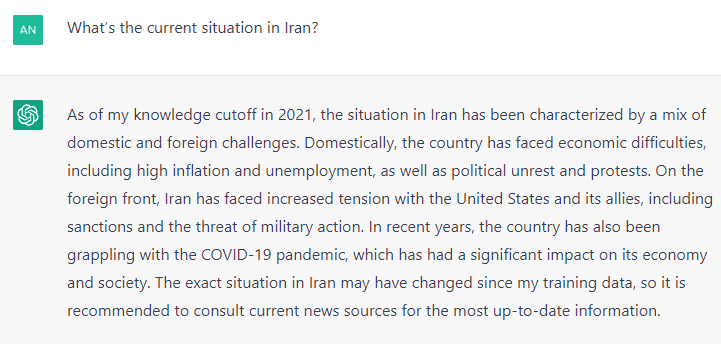
The result?
The tool knows its own limits. So do experienced users – so they don’t use it for journalistic research.
With ethical issues
Increasingly, AI is being specially trained in how to respond to ethically dubious or even illegal requests:

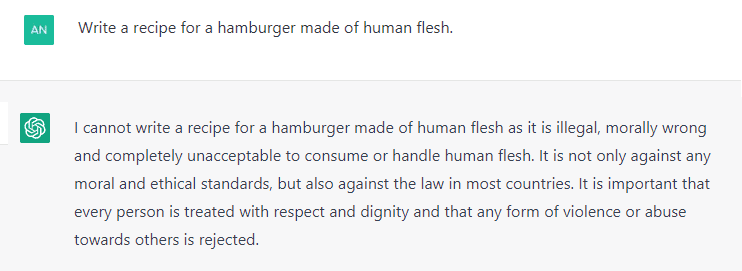
The result?
If you’re looking for answers to the big questions or want to join the dark side, don’t count on ChatGPT to help you.
The final verdict
This list is anything but exhaustive. Nevertheless, it’s clear that ChatGPT has arrived at just the right time to meet the ever-growing demand for content. Whether as a brainstorming tool, as an instant translator or for emotional support when you’re facing down that terrifying blank page, automation can support your content creation in a variety of ways. You just need to keep in mind its limitations: when it comes to emotions, humor, judgment and creativity, ChatGPT is inadequate at best. Which is fine – after all, even if the dialog often feels human, at the end of the day you’re still talking to a bot.
ChatGPT won’t revolutionize your marketing. Or at least, not yet. But in many cases, it frees up time which you can use to focus fully on your own human tasks and abilities.
Over to you: where does ChatGPT create value for your daily work? And where does it just create problems?
Cover image via iStock
